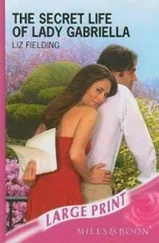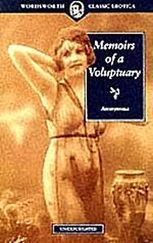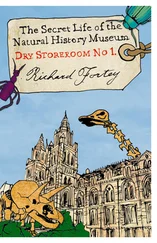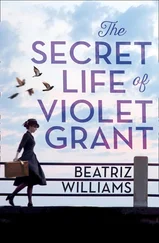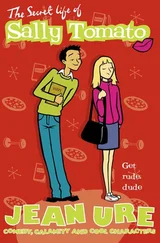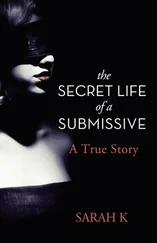The Misfits
B y the end of July 1960, Marilyn Monroe was in Reno, Nevada, for location shooting on The Misfits , which, as it happened, was the last movie she would complete. Entire books have been written about the various miseries surrounding the production of this film. Suffice it to say, not one thing seemed to be in balance, not the least of which was Marilyn’s mental and physical condition, which continued to deteriorate by the day.
“ The Misfits should never have happened,” Marilyn’s makeup artist, Allan “Whitey” Snyder, once said to the “All About Marilyn” fan club. “She wasn’t feeling well when they insisted on starting shooting, and there were so many script changes in her part that Arthur made so often, she became less and less happy with her role and character.” In another interview, he added, “The drugs had pretty much taken over by this time. She was having a terrible time. Everything was going wrong. It was like a snowball going down a mountain, the problems just accumulating.
“Marilyn and Arthur so loathed each other, I’m not sure how either of them got through this movie. Everyone felt the pressure of it all. Marilyn was more paranoid than ever before. She believed Arthur was having an affair with someone on the set, a script supervisor I believe. He wasn’t. After what had happened with Yves Montand, though, it was surprising that she was so angry. Everything was out of whack. He had written a movie that seemed very personal, that drew from elements of the real Marilyn’s personality and her relationship with him, so that made it even more difficult for her. Honest to God, there were lines in that movie that were right out of her experience with Arthur Miller. Why he did that, I don’t know. To be mean, maybe? I don’t know. Then he would change the lines just before she had to film them. He kept her off balance the entire time. To me, it felt like a punishment. I have never said that before, but that’s how I feel. I have bad memories of this time. It was as if Marilyn was close to the edge, and her husband was the one pushing her over it.”
Can Marilyn Monroe be considered Arthur Miller’s muse? Or was she more like a wounded, unwitting victim of the playwright’s exploitation? An examination of two of Miller’s literary creations—a play and a movie script—would seem to point to his former wife as having been a bit of both. In Miller’s 1964 play After the Fall , which opened at New York’s ANTA Washington Square Theatre in January 1964, only eighteen months after Marilyn’s death on August 7, 1962, the protagonist is a middle-aged lawyer ruminating upon his relationships with the three women in his life and how the marriages to two of them ended, the first in divorce, the second in the suicide of his wife, an actress, and the third a work in progress. Though Miller always denied the genesis of the play, if he thought of it at all, he must have acknowledged to his private self the parallels with events in his own life, not only concerning his women but also his personal experiences in the mid-1950s with HUAC’s spurious search for alleged Communists in the government, which he used as the inspiration for The Crucible.
Miller’s screenplay of The Misfits , adapted from his Esquire magazine short story, was the only thing he wrote during his four-year marriage to Marilyn. He points out in his autobiography, Time-bends , that he wrote the screenplay as a gift to her and as she read an early draft she would “laugh delightfully at some of the cowboys’ lines but seemed to withhold full commitment to playing Roslyn.” Perhaps Marilyn should have listened to her instincts, for she grew to hate the script and her character, which she regarded a caricature of her. Making Roslyn a recently divorced dancer and a needy clinging vine, whose very existence was reliant upon the approval of the men in her life, Miller seemed determined to show the character in all its flaws, and by extension Marilyn, who is limning the character. Marilyn was as smart as she was sensitive, and none of this was lost on her. Despite her misgivings, the reassurances of director John Huston and others whose opinions she valued gave her the will to continue. When Arthur sent the first draft of the script to Huston in Ireland, he agreed to direct it. With her Asphalt Jungle director at the helm, and a dream cast assembled by MCA über-agent Lew Wasserman—Clark Gable, Montgomery Clift, Eli Wallach, Thelma Ritter—Marilyn came around and agreed to be in the film.
In the story, Roslyn Taber (Monroe) has come to Reno to get a divorce and taken a room with Isabelle Steers (Ritter), who accompanies her to divorce court as a witness. Celebrating Roslyn’s freedom at a bar, they meet Guido (Wallach) and Gay (Gable), a late-fiftyish, still roguishly handsome onetime cowboy. Their chemistry established, Roslyn and Gay move in together in a house Guido is building. Like Gay, he too falls for Roslyn. Guido hatches a plan to round up wild mustangs, called misfits because they are too small to ride, on the Nevada salt flats and sell them. Joining them in the enterprise is Perce (Clift), a beaten-up, down-on-his-luck rodeo rider. The three, accompanied by Roslyn, head out to the salt flats to corral the mustangs. It is only after they arrive at the site that Roslyn learns of the mustangs’ fate: They are to be sold to a dog food manufacturer. Horrified at the thought—just as Marilyn, always a pet lover, would be—Rosalyn begs Gay to spare the six horses. At first he refuses, but in the end, so struck is he by her passion to save the mustangs, Gay cuts the ropes and frees them. This act of compassion also allows Gay and Roslyn to come to a better understanding of each other as they head off to a future together.
Marilyn threw herself into the role, determined to make the film work. Despite the demands of the part, both physically and emotionally, she was able to rise to the occasion again and again. She was given a look that was quite different from the one her fans were used to. Famous Hollywood hairstylist Sydney Guilaroff styled a wig that was smoother, sleeker, and longer than what she usually wore. Gone were the bedhead curls that had become her trademark. Jean Louis—who would go on to create the skintight, sparkly “Happy birthday, Mr. President” gown—came up with several outfits that revealed Marilyn’s curves to wonderful advantage. The halter-top white cotton dress splattered with large, quarter-size polka dots was worn without any discernible foundation garment and worked so well that Marilyn selected it for personal appearances when she promoted the film. She was photographed in color for an Esquire pictorial and the polka dots turned out to be red, not black as they appeared in the film. Her longtime personal makeup man, Allan Snyder, was on location to apply the powder, lipstick, mascara, and blush sparingly in keeping with the film’s rustic, open-air setting. It is almost unbelievable that Marilyn’s beauty remained unmarred by the angst, the stress, the drugs and alcohol, and the rough-and-tumble action of the film.
The long, four-month shoot in the harsh Nevada landscape was difficult, made more so by Marilyn’s erratic behavior and her insecurities about the project. There was also her abuse of booze and drugs and her unhappiness about her marriage to Miller, which was coming to an end. “I don’t even think he wanted me in it,” she said at the time of her husband and his movie. “I guess it’s all over between us. We have to stay with each other because it would be bad for the film if we split up now. Arthur’s been complaining to [John] Huston about me, and that’s why Huston treats me like an idiot with his ‘dear this’ and ‘dear that.’ Why doesn’t he treat me like a normal actress?”
Читать дальше



